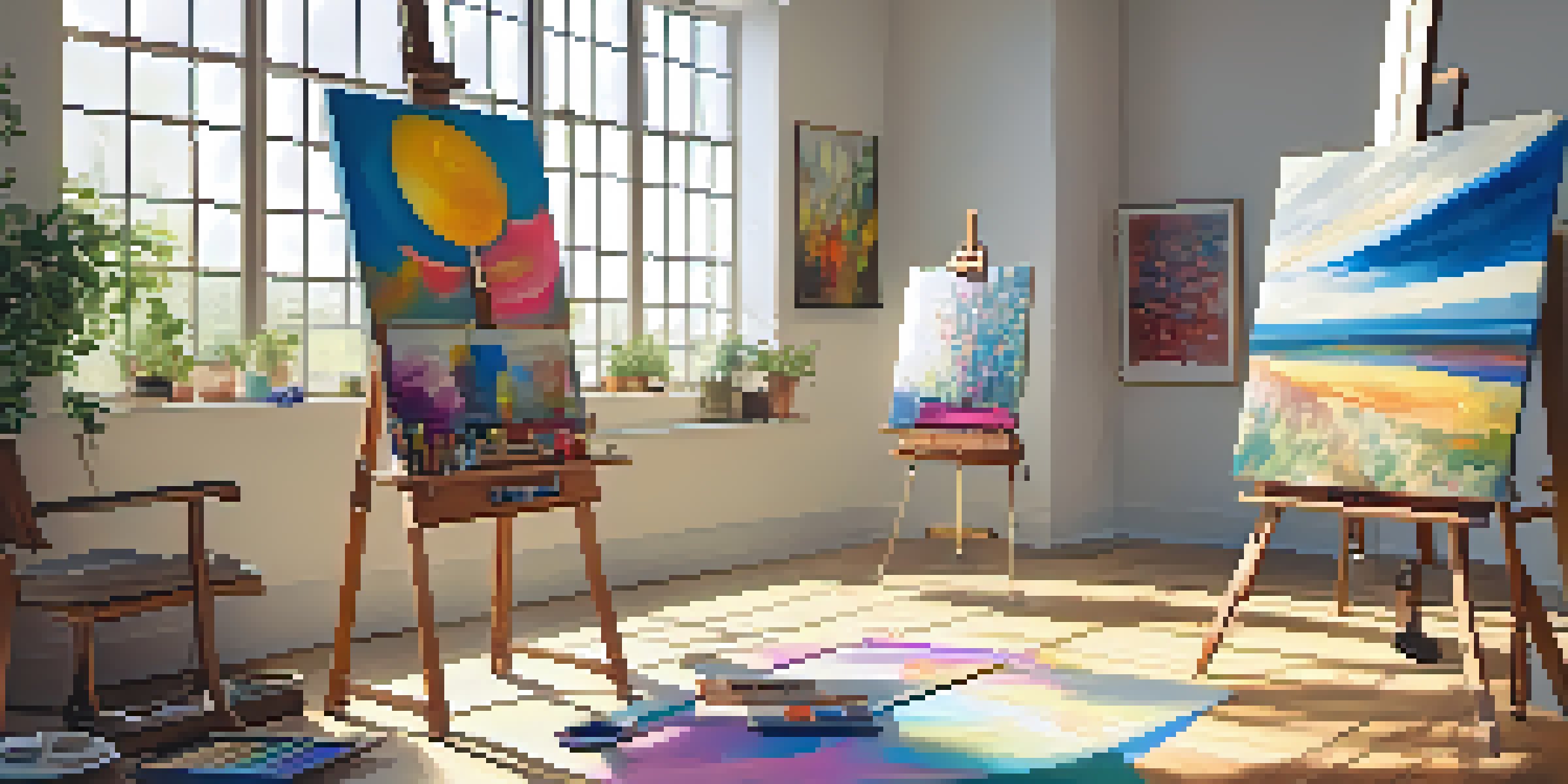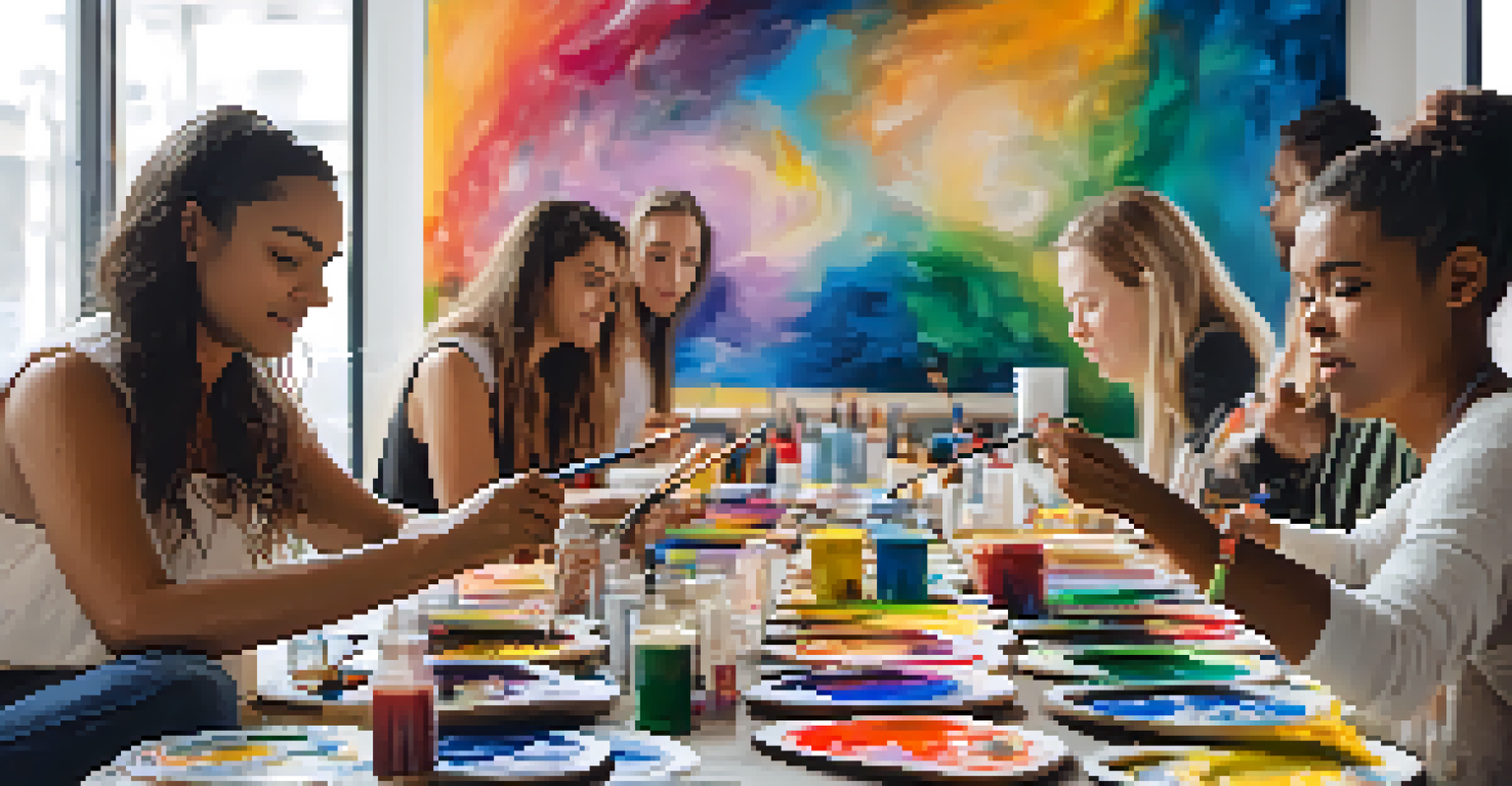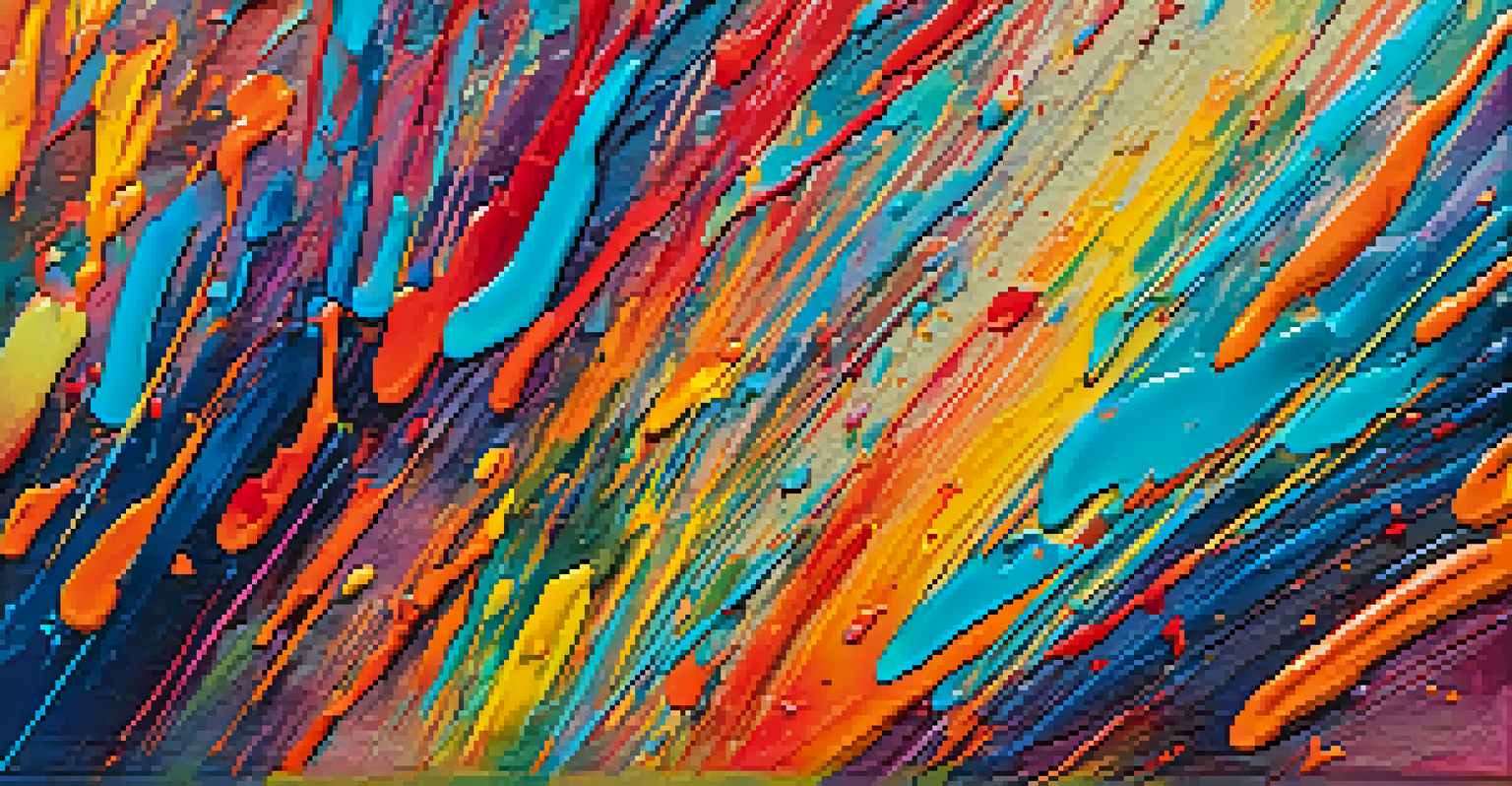The Role of Painting in Expressive Arts Therapy Approaches

Understanding Expressive Arts Therapy and Its Components
Expressive arts therapy is a holistic approach that utilizes creative expression as a means of healing and self-discovery. It encompasses various art forms, including music, dance, and, notably, painting. By engaging in these artistic processes, individuals can explore emotions that might be difficult to articulate through words alone.
Art enables us to find ourselves and lose ourselves at the same time.
This therapy emphasizes the importance of the creative journey rather than the final product. For instance, a person may paint abstract shapes to represent feelings of anxiety, allowing them to confront those emotions visually. This process fosters a deeper understanding of oneself and can lead to significant personal growth.
Painting, in particular, serves as a powerful tool within this framework, as it allows for spontaneity and freedom of expression. Whether it's through vibrant colors or abstract forms, each brushstroke can convey complex feelings, making it an essential aspect of expressive arts therapy.
The Therapeutic Benefits of Painting in Therapy
Painting can provide numerous therapeutic benefits, including stress reduction and emotional release. When individuals immerse themselves in the act of painting, they often enter a state of flow, where worries fade and creativity flourishes. This natural focus can lead to a sense of calm and clarity, much like meditation.

Moreover, the act of creating art allows individuals to process trauma and difficult experiences without the need for verbal communication. For example, a person who has experienced loss may find solace in painting their feelings instead of discussing them directly. This can lead to breakthroughs in understanding and healing.
Creative Expression for Healing
Expressive arts therapy uses various art forms, particularly painting, to facilitate emotional exploration and personal growth.
Additionally, painting can enhance self-esteem and confidence. As individuals create art that reflects their inner world, they often feel a sense of accomplishment and pride in their unique expression. This boost in self-worth can be particularly beneficial for those who struggle with negative self-image.
Exploring Emotions Through Color and Form
Colors carry powerful meanings and can evoke a wide range of emotions. In the context of painting, individuals often select colors intuitively, reflecting their current emotional state. For instance, someone feeling joyful might gravitate towards bright yellows and oranges, while darker hues may represent sadness or anger.
Painting is just another way of keeping a diary.
By exploring these color choices, therapists can gain insights into a client's emotional landscape. This exploration can spark conversations about feelings, helping individuals understand the underlying issues they may be facing. It’s like a visual diary, revealing what words sometimes cannot.
Furthermore, the shapes and forms created during the painting process can also reflect emotional states. Abstract forms might symbolize chaos or confusion, while structured patterns can indicate a sense of control. This duality of color and form allows for a rich exploration of emotions in a safe and supportive environment.
Creating a Safe Space for Expression
A fundamental aspect of expressive arts therapy is the creation of a safe and supportive environment. In a therapeutic setting, individuals are encouraged to freely express themselves without fear of judgment. This freedom is crucial for them to explore their feelings through painting.
Therapists often set the stage by providing a range of materials and a welcoming atmosphere that fosters creativity. When clients feel safe, they are more likely to dive deep into their emotions and create art that resonates with their true selves. It’s similar to having a supportive friend cheering you on as you try something new.
Therapeutic Benefits of Painting
Painting serves as a powerful tool for stress reduction, emotional release, and enhancing self-esteem.
The therapeutic space also allows for guided discussions about the artwork created, further reinforcing the sense of safety and trust. Clients can share their thoughts and feelings about their paintings, leading to deeper connections and insights into their emotional journeys.
The Role of the Therapist in Art Creation
In expressive arts therapy, the therapist plays a pivotal role in guiding clients through their creative endeavors. They provide support and encouragement while also helping to frame the artistic process as a means of exploration and healing. Think of the therapist as a gentle lighthouse, guiding clients through their emotional seas.
Therapists may introduce specific themes or prompts to inspire creativity, but they also allow clients the freedom to choose their artistic direction. This balance helps individuals feel empowered in their choices, as they navigate their emotions and experiences through painting.
Furthermore, therapists often observe the artwork and the stories behind them, using these insights to tailor future sessions. This collaborative approach ensures that therapy remains relevant and responsive to each individual’s evolving needs.
Integrating Painting with Other Therapeutic Modalities
While painting is a powerful tool in expressive arts therapy, it is often integrated with other therapeutic modalities to enhance overall effectiveness. For example, combining painting with music therapy can create a multi-sensory experience that deepens emotional exploration. Picture painting while listening to soothing melodies; it can elevate the creative process.
Additionally, incorporating movement or dance can further enrich the experience. Clients might express their emotions not only through paint but also through body movement, creating a dynamic interplay between different forms of expression. This holistic approach recognizes that each individual may resonate with different modalities.
Safe Space for Emotional Exploration
Creating a supportive environment allows individuals to express themselves freely, leading to deeper insights into their emotions.
By blending these therapeutic techniques, therapists can cater to a wider range of emotional needs and preferences, ultimately leading to more effective outcomes. It transforms the therapeutic experience into a rich tapestry of creativity and self-discovery.
Success Stories: Transformative Experiences Through Painting
Many individuals have experienced transformative journeys through painting in expressive arts therapy. For instance, someone who struggled with anxiety found that painting allowed them to externalize their feelings, leading to significant relief and understanding. Their artwork became a visual representation of their inner battles, making it easier to confront them.
Another success story involves a woman coping with grief after losing a loved one. Through painting, she was able to honor her memories and express her sorrow in a tangible way. Each stroke of her brush became a cathartic release, helping her navigate through the complex emotions of loss.

These stories highlight the profound impact that painting can have on individuals' mental health and emotional well-being. As they share their experiences, it becomes evident that painting is not just an art form; it is a powerful pathway to healing and self-acceptance.